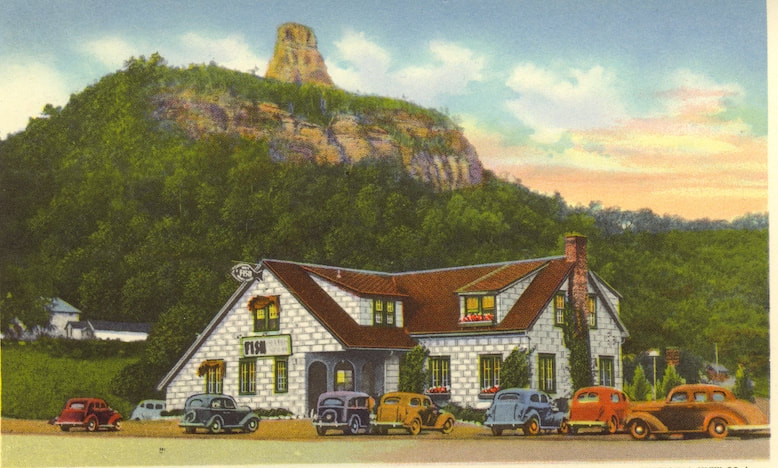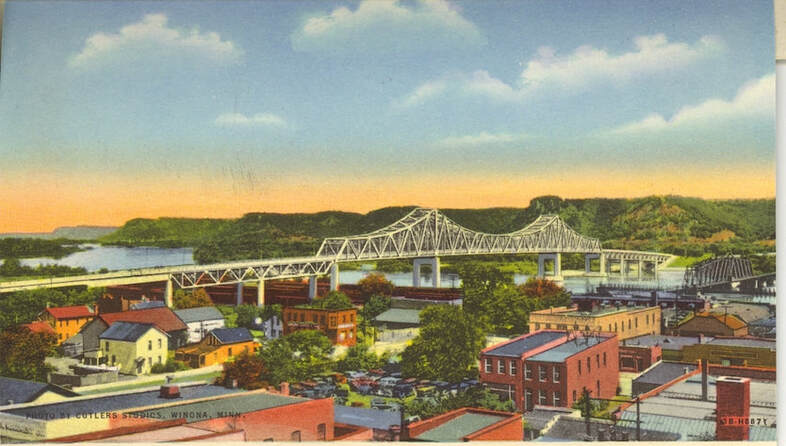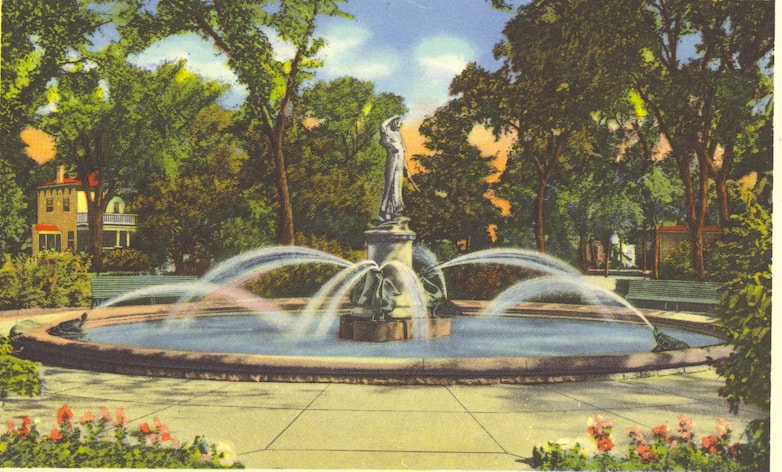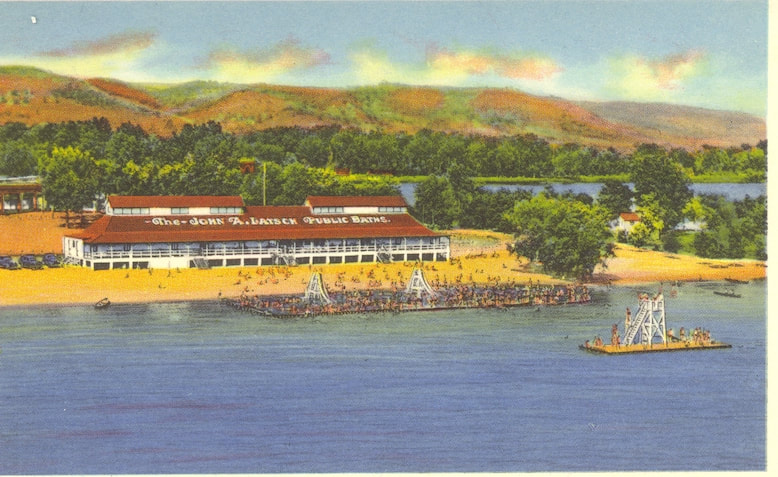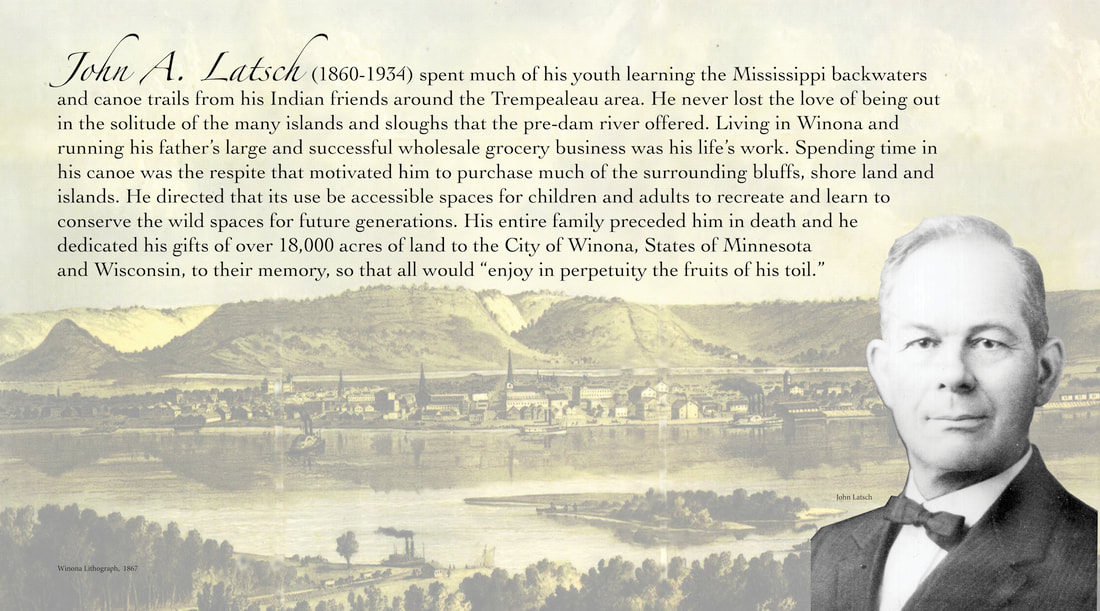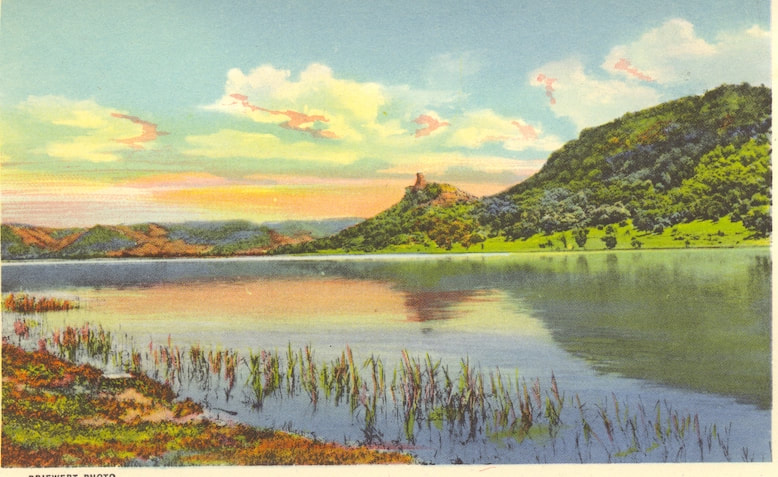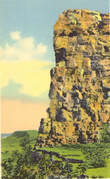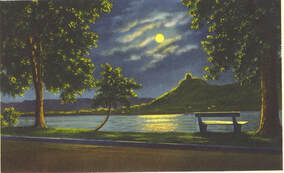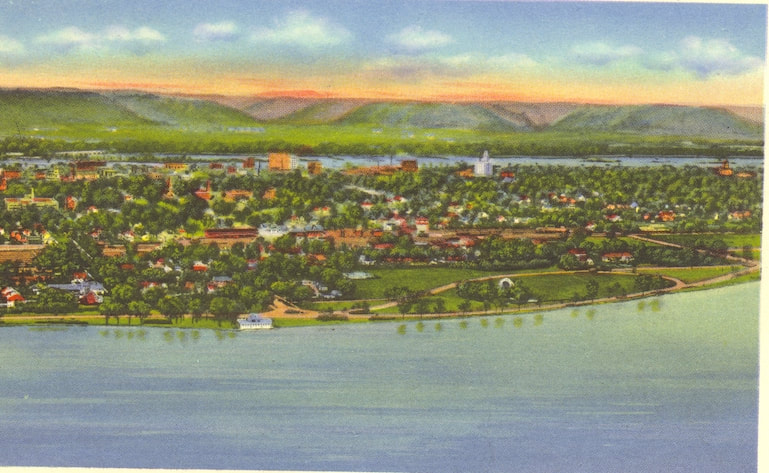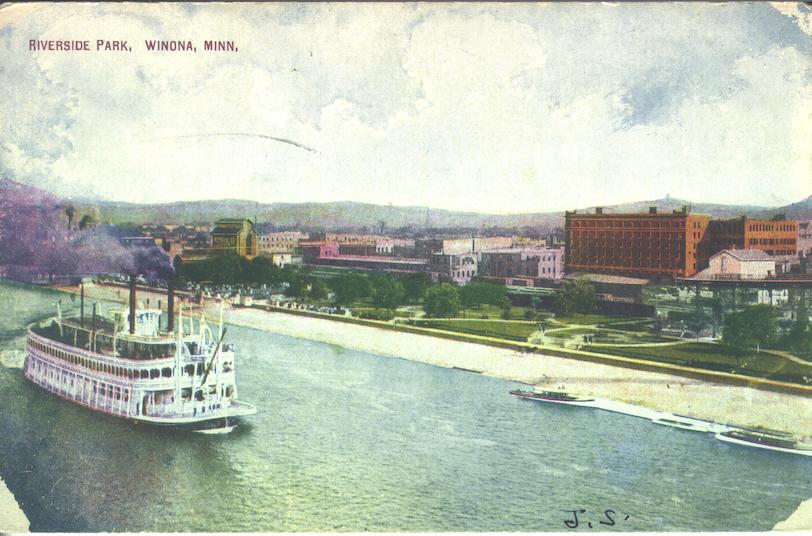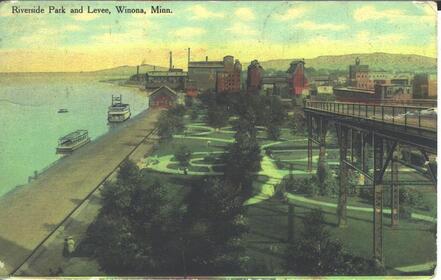Postcards: Landmarks and Sites
Sugar Loaf above the Hot Fish Shop. The Hot Fish Shop was a local restaurant specializing in walleye and other seafood dishes.
Winona's Interstate Bridge was opened in 1942, replacing the old High Wagon bridge that connected Minnesota and Wisconsin across the Mississippi River.
When Ida (Cone) Landon died in 1899, her husband wanted a fitting memorial to her. Isabel Moore Kimball, a distant relative of Ida’s, was commissioned to fashion a statue of the legendary “Princess Wenonah.” After residing in Central Park for some sixty years, the bronze statue spent some time in storage, in Lake Park, in Plaza Square, before finding her current home in Windom Park.
The John Latsch Bath House was located just across the main channel from Levee Park. It was a favorite summer spot for locals and visitors.
